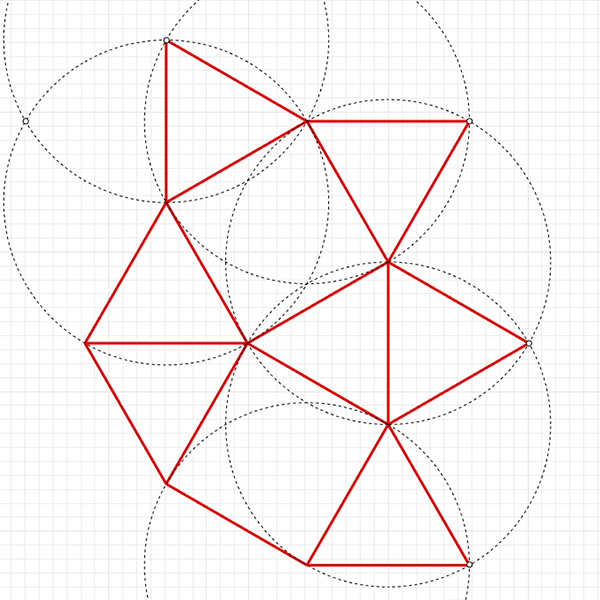Euclidean Construction of Snub Square Tiling
The snub square tiling is one of the semi-regular tessellations, where regular triangles and squares match perfectly to fill the plane without gaps or overlaps. The Euclidean construction of Snub Square tiling is possible by utilizing the basic compass and straightedge operations. I made this construction in Rhinoceros to show that there is no need for any numerical input to locate the points and draw the tiling. There are two major techniques explained there. One of them is the basic method to draw triangles by using a compass or a circle. The other is the calculation of the right angle (90 degrees) without any number but only geometric construction. This ancient art and science is still interesting and educational for the basics of architectural geometry.
The snub square tiling is also named 3.3.4.3.4 since at any vertex, these are the polygons around it. The name comes from the snub operation which includes expanding and twisting. This tiling is the result of the snub operation on a regular square tiling.
I studied the Euclidean construction of snub square tiling many times before. After those years, trying and executing this construction sequence is still funny and motivating. I generated this tiling in Grasshopper here. However, drawing in Rhino or any other CAD software seems to be easier than coding this. The drawing usually starts with a random line on the plane. The process includes the drawing of two regular triangles. Then, I proceed by finding the right angle direction, normal to any segment of these triangles. This requires two identical intersecting circles that are on the same axis as the segment. The radius of these circles doesn’t matter as long as they intersect. Also, this requires the distance transferring via the copy command in Rhino.









